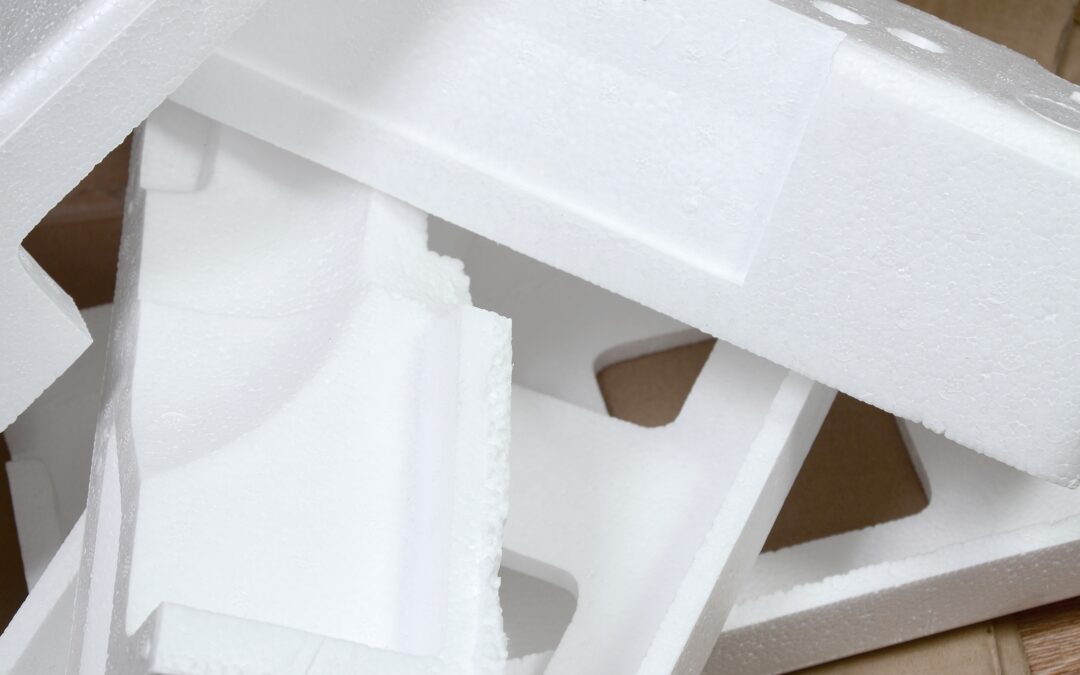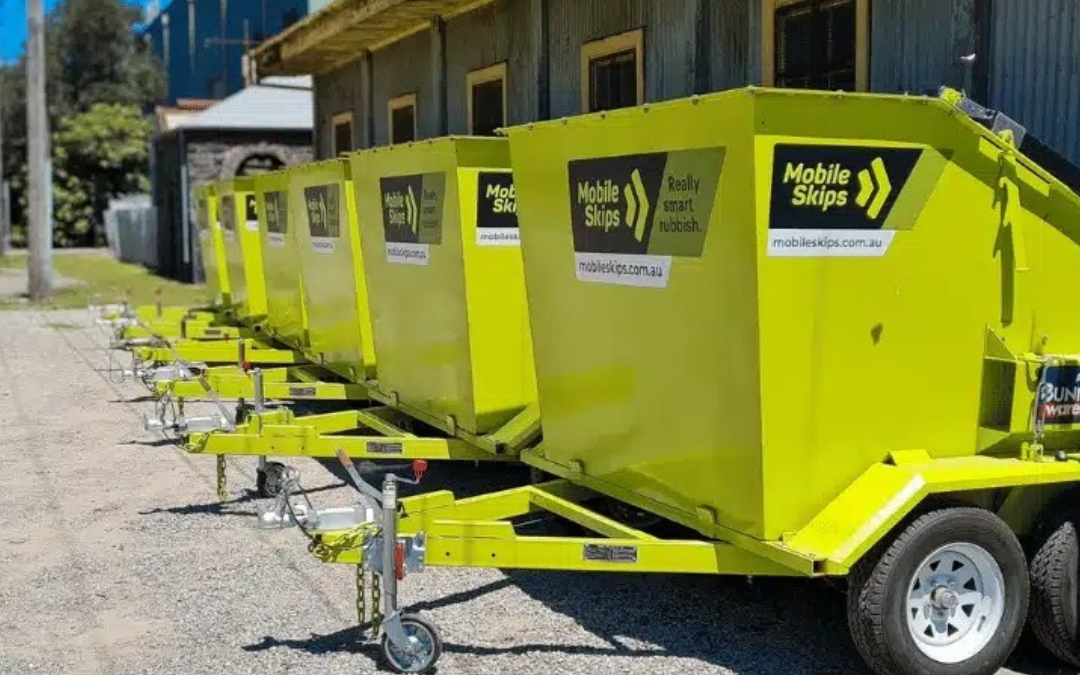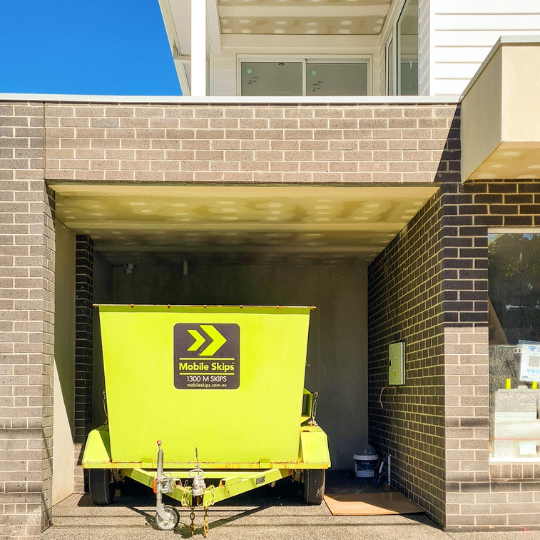DIY Waste Removal Precautions (for your safety).
Hazardous Waste Disposal Precautions
Handling DIY waste? Safety first, especially with hazardous stuff. Dumping Household Hazardous Waste (HHW) the wrong way can mess up the environment, harm your health, and even injure sanitation workers (EPA). Don’t pour hazardous waste down the drain, on the ground, or into storm sewers. Mixing it with regular trash? Big no-no. It can mess up septic tanks, wastewater systems, and endanger kids and pets. For more on safe disposal, check out our DIY waste removal guidelines.
Personal Protective Equipment (PPE)
Using the right Personal Protective Equipment (PPE) is a must to stay safe during waste removal. PPE includes clothing, footwear, hand protection, and eye protection. These items shield you from moving objects, sharps, and hazardous materials (CompSource Mutual). Here’s a quick rundown of the essential PPE you need:
| PPE Item | Purpose |
|---|---|
| Gloves | Protect hands from sharps and chemicals |
| Safety Glasses | Shield eyes from debris and splashes |
| Sturdy Boots | Protect feet from heavy objects |
| Protective Clothing | Shield skin from hazardous materials |
For more info on PPE, visit our DIY waste removal equipment page.
Additional Precautions
- Label Hazardous Waste: Clearly mark all hazardous waste containers.
- Store Safely: Keep hazardous materials in a secure spot, away from kids and pets.
- Follow Regulations: Stick to local rules for hazardous waste disposal. For more details, see our DIY waste removal regulations.
Knowing the importance of PPE and hazardous waste precautions is key to safe and effective home DIY waste removal. For more tips, check out our DIY waste removal tips and DIY waste removal best practices.
Safe Skip Bin Usage
Using skip bins for your home DIY waste removal projects can make the process much easier and more efficient. But, there are some rules you gotta follow to keep things safe and legal. Let’s talk about what you can toss in there and why sticking to weight limits and bin sizes matters.
What Can Go In?
Not everything can go into a skip bin. Some stuff is a big no-no. According to Mobile Skips, here’s what you should avoid:
- Asbestos
- Chemicals
- Batteries
- Paint
- Poison
- Food
- Biological waste
- Gas bottles
- Fuel
- Oils
These items are hazardous and need special handling. If you’ve got any of these, check out diy waste removal services for safe disposal options.
Size and Weight: Why They Matter
Picking the right bin size and sticking to weight limits is key. Most skip bin providers, like Mobile Skips, offer different sizes to fit your needs. For example, they have 4 cubic meter bins, perfect for home clean-ups, garden waste, or small projects.
Overloading a skip bin can be a real headache and dangerous to move. Here’s a quick look at what you can expect:
| Skip Bin Type | Size (Cubic Meters) | Weight Limit (kg) |
|---|---|---|
| Standard Skip | 4 | 500 |
| Heavy Skip | 4 | 1000 |
Data from Mobile Skips
Choosing the right size and not overloading ensures everything runs smoothly. For bigger projects, you might need more than one bin or more frequent pick-ups. Check out our guide on diy waste removal container sizes for more info.
Using skip bins properly not only makes your renovation waste disposal safer but also keeps you on the right side of the law. Always follow the guidelines from your skip bin provider and consult our diy waste removal guidelines for more tips on safe waste management.
Environmental Responsibility
Taking care of your own waste doesn’t just mean tossing stuff out. It’s about doing it in a way that’s kind to our planet. Let’s talk about how you can make a real difference with recycling and cutting down on your carbon footprint.
Recycling Partnerships
Recycling is the bread and butter of responsible waste management. When you team up with recycling organizations, a big chunk of your trash gets a second life instead of rotting in a landfill. Many waste removal companies have these partnerships to keep things green.
Take Mobile Skips for example. They work with various recycling centers to make sure your junk is sorted and recycled as much as possible. This not only cuts down on the environmental damage but also gives the recycling industry a boost. So, by picking a waste removal service that’s big on recycling, you’re doing your bit for the planet.
Want to know more about recycling your DIY waste? Check out our article on recycling options for DIY waste.
Cutting Down Your Carbon Footprint
Reducing your carbon footprint is another biggie in being eco-friendly with waste. The emissions from waste disposal can mess with the climate, so it’s key to keep them in check.
One way to do this is by using services that support carbon offset projects. For instance, Mobile Skips has a cool deal with Carbon Neutral. They plant a tree for every rubbish collection booked online, and it doesn’t cost you a dime. This helps balance out the carbon emissions from waste removal, making your cleanup greener.
| Initiative | Description |
|---|---|
| Tree Planting | 1 tree planted for every rubbish collection booked online |
| Partner | Carbon Neutral |
| Cost | No extra cost to the customer |
Using services with these kinds of commitments can make a huge difference. Curious about other green waste removal options? Check out our page on DIY waste removal eco-friendly options.
By focusing on recycling and cutting down your carbon footprint, you can make sure your DIY waste removal is safe and planet-friendly. For more tips on managing waste sustainably, visit our articles on waste management for DIY projects and DIY waste removal best practices.
Skip Bin Delivery and Service
Got a home DIY project? Efficient skip bin delivery and placement can make or break your progress. Let’s chat about why quick delivery times and permit-free placement are game-changers for your waste removal needs.
Quick Delivery Times
When you’re knee-deep in a DIY project, the last thing you need is to wait around for a skip bin. Mobile Skips has your back, promising to drop off a skip bin at your door within 3 hours of booking. During business hours, they might even show up in as little as 15 minutes after you hit that request button.
This speedy service keeps your project on track, so you can focus on the fun stuff—like smashing that old kitchen to bits or tearing down that outdated bathroom. No more chasing deliveries or dealing with annoying delays.
| Service | Delivery Time |
|---|---|
| Mobile Skips | Within 3 hours |
Permit-Free Placement
Here’s where Mobile Skips really shine: no permits needed. Unlike those clunky traditional skip bins that might require you to jump through council hoops, Mobile Skips come on a registered trailer. This nifty design means you can park them anywhere a car fits—on the street, in your driveway, or even in underground car parks (Mobile Skips).
This permit-free perk saves you a ton of time and hassle. No more wrestling with council regulations. Plus, you get to choose the most convenient spot for your skip bin, making waste management a breeze for your home renovation.
| Skip Bin Type | Permit Requirement |
|---|---|
| Mobile Skips | None |
Need more tips? Check out our DIY waste removal tips and guidelines. Whether you’re dealing with general junk, clinical waste, or even pharmaceutical trash, Mobile Skips makes it easy and hassle-free.
So, next time you’re gearing up for a DIY project, remember: quick delivery and permit-free placement can save your sanity. Happy renovating!
Proper Hazardous Waste Transport
Got a DIY project at home? Handling hazardous waste can be tricky, but knowing the right way to transport it is key. Stick to the rules, and you’ll keep things safe and legal.
Follow EPA Rules
Moving hazardous waste isn’t just about tossing it in a truck. The Environmental Protection Agency (EPA) has a bunch of rules to follow. If you’re a new homeowner, make sure the transporter you hire knows these rules inside and out. Here’s what they need to do:
- Get an EPA ID Number: This number is assigned to the transportation company and used by each truck. It’s like a license plate for hazardous waste.
- Follow DOT Rules: The U.S. Department of Transportation has rules for labeling, marking, placarding, and containers. It’s all about keeping things safe on the road (EPA).
- Handle Spills Right Away: If there’s a spill, the transporter must act fast to protect people and the environment. This might mean calling local authorities or containing the spill.
Hazardous Waste Manifest System
The Hazardous Waste Manifest System is like a tracking device for your waste. It makes sure the waste gets from your home to the disposal site without causing any trouble.
- Fill Out the Manifest: You, the generator, need to fill out a document that details the type and amount of waste. This document travels with the waste.
- Transporter Signs and Dates: When the transporter picks up the waste, they sign and date the manifest. They also give you a copy before leaving. This step is super important because it confirms they’ve taken responsibility (EPA).
- Track the Waste: The manifest tracks the waste from your home to the disposal site. Everyone involved knows where the waste is at all times.
- Stay Compliant and Safe: Following the manifest system keeps you in line with the rules and helps manage waste safely.
Here’s a quick look at the steps:
| Step | Action | Responsibility |
|---|---|---|
| 1 | Fill out manifest document | Generator (You) |
| 2 | Sign and date manifest | Transporter |
| 3 | Return copy of signed manifest | Transporter |
| 4 | Track waste to disposal | Generator and Transporter |
Stick to these steps, and you’ll handle your hazardous waste like a pro. For more tips on DIY waste removal, check out our articles on DIY waste removal guidelines and DIY waste removal regulations.
Waste Disposal Best Practices
Household Hazardous Waste Handling
Got old paint cans, used batteries, or leftover pesticides lying around? These aren’t just clutter—they’re household hazardous waste (HHW). Tossing them in the trash or pouring them down the drain can mess up the environment and even harm your health (EPA).
Here’s how to handle HHW like a pro:
- Buy Less Hazardous Stuff: Go easy on products with nasty chemicals. Look for eco-friendly or natural options instead.
- Store Safely: Keep hazardous materials in their original containers with labels on. Store them in a cool, dry spot away from kids and pets.
- Dispose Properly: Use local waste disposal programs that take HHW. Never pour hazardous stuff down the drain or on the ground.
- Gear Up: Wear gloves, goggles, and masks when dealing with HHW.
For more tips, check out our DIY waste removal guidelines page.
Skip Bin Waste Removal Benefits
Got a home project going on? Skip bins are your best friend for managing all that waste. Here’s why:
- Easy Peasy Waste Management: Skip bins make it super easy to collect and get rid of a lot of waste, saving you time and hassle.
- Sizes for All Needs: Whether you’re doing a small cleanout or a big renovation, there’s a skip bin size for you (DIY waste removal container sizes).
- Eco-Friendly: Many skip bin companies work with recycling centers to make sure recyclable materials get processed right (recycling options for DIY waste).
- Stay Safe: Using a skip bin keeps your work area tidy and reduces the risk of accidents.
| Skip Bin Size | Good For | Weight Limit |
|---|---|---|
| Mini (2-3 m³) | Small cleanouts, garden waste | 250 kg |
| Midi (4-6 m³) | Medium renovations, bulky items | 500 kg |
| Maxi (7-10 m³) | Big projects, construction debris | 1000 kg |
For more tips on using skip bins, visit our skip hire for home DIY and DIY waste removal tips pages.
By following these tips for handling household hazardous waste and using skip bins, you’ll make your DIY projects safer and more efficient. Always keep safety and the environment in mind while working on your home projects.
Managing Different Waste Types
When you’re knee-deep in a home DIY project, knowing how to handle the different types of waste is crucial. This guide will help you sort out general, clinical, and pharmaceutical waste, plus how to deal with disinfectants and chemicals.
General, Clinical, and Pharmaceutical Waste
General Waste
General waste is your everyday stuff—think packaging, old household items, and debris from your DIY efforts. Toss these into your regular skip bin (skip hire for home DIY). Just make sure you’re following DIY waste removal guidelines to keep things on the up and up.
Clinical Waste
Clinical waste is a bit trickier since it can be infectious. We’re talking used needles, bandages, and surgical tools. According to Health.vic, single-use sharps should go into a sharps container that meets Australian and New Zealand Standards AS 4031:1992 and AS/NZS 4261:1994. Licensed waste disposal companies will take it from there.
| Waste Type | Disposal Method |
|---|---|
| General | Regular skip bin |
| Clinical | Sharps container, biohazard bags, licensed collection |
| Pharmaceutical | Return to pharmacy, licensed collection |
Pharmaceutical Waste
Got expired or unused meds? Don’t chuck them in the bin or flush them. Take them back to a pharmacy for safe disposal. Licensed waste disposal companies can also handle this.
For more details, check out our guide on waste management for DIY projects.
Disinfectant and Chemical Disposal
Disinfectants and chemicals need special care. Messing up their disposal can harm you and the environment. Here’s how to handle them safely:
Disinfectants
Most disinfectants can go down the sewer. Run cold water in the sink before pouring the disinfectant, and keep the water running for a bit afterward to dilute it. Always check the label for specific instructions.
Chemicals
Never pour chemicals like paints, solvents, or cleaners down the drain. Hazardous waste can come from various sources, and it’s vital to follow proper disposal methods to avoid serious harm. Use licensed waste disposal services for hazardous chemicals.
For more tips on handling different types of DIY waste, visit our DIY waste removal best practices and DIY waste removal checklist.
By knowing how to properly dispose of general, clinical, pharmaceutical, and chemical waste, you’ll make your home renovation debris removal process safe and smooth.
The Real Cost of Bad Waste Disposal
Messing up your waste disposal during DIY projects can be a real headache, not just for you but for the planet too. Knowing the fallout can make you think twice before chucking stuff out willy-nilly. Check out our DIY waste removal safety tips to get it right.
Why It Matters: Health and Environment
Dumping Household Hazardous Waste (HHW) like it’s no big deal can mess up the environment and your health. Pouring nasty stuff down the drain, on the ground, or into storm sewers can pollute water and soil. This pollution can mess up ecosystems and make people sick.
| Hazardous Waste Type | What It Messes Up |
|---|---|
| Batteries | Soil and water |
| Industrial byproducts | Air and water |
| Medical wastes | Spreads diseases |
| Pesticides and herbicides | Hurts wildlife and plants |
| Cleaners and solvents | Toxic fumes and water |
Bad disposal can also put sanitation workers at risk, mess up septic tanks, and be dangerous for kids and pets. The EPA says hazardous waste can be really harmful to people and the environment.
The Money Pit: Economic Costs
Screwing up waste disposal can cost a ton of money. Cleaning up polluted sites, treating dirty water, and dealing with health issues can be super expensive. Taxpayers often foot the bill, putting a strain on public resources.
| Cost Type | What It Costs |
|---|---|
| Environmental cleanup | Fixing soil and water |
| Healthcare | Treating exposure-related illnesses |
| Waste management | More rules and oversight |
| Legal | Fines and penalties |
| Public resources | Strain on local governments |
Doing it right can save a lot of cash. Using skip hire for home DIY projects makes sure waste is handled properly, cutting down on environmental damage and saving money.
Want more tips on safe waste management? Check out our articles on home DIY waste removal and DIY waste removal guidelines. Knowing the impact of bad waste disposal helps you make smarter choices for your home and the planet.






